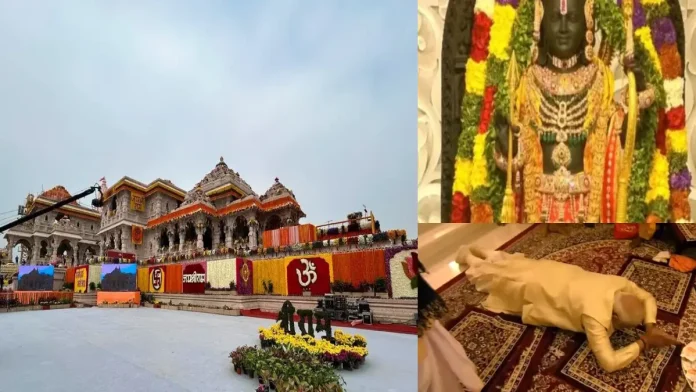Ayodhya (Uttar Pradesh, India): In a momentous occasion that echoed through the annals of history, India’s Prime Minister Narendra Modi led the Pran Pratishtha ceremony at the newly-inaugurated Ram Temple in Ayodhya. Speaking to a gathering of nearly 8,000 people, Modi expressed the significance of the moment, stating, “Our Ram Lalla will no longer live in a tent; he will now reside in a grand temple.”
The Ram Temple, now the largest in India, stands as a testament to devotion, constructed entirely of stones without the use of steel or iron. The sprawling structure, spread across 2.7 acres and encompassing three floors, has been a long-awaited dream for millions who believe in the sacredness of Ayodhya as the birthplace of Lord Rama.
The history of the Ayodhya site has been marred by controversy, serving as a focal point of dispute between the Hindu and Muslim communities for centuries. The dispute reached its peak in 1992 when the Babri Masjid, standing at the site, was demolished by Hindu nationalists, claiming that it was built upon the revered Ram Janmabhoomi.
The issue underwent thorough examination, considering archaeological, literary, and social aspects, culminating in a landmark verdict by India’s Supreme Court. The court ruled in favor of the Hindu claim, ordering the creation of a trust to oversee the construction of the Ram Mandir. The government of India retains ownership of the disputed land, which will be subsequently transferred to the trust.
The Ram Temple is a magnificent architectural marvel, spanning 360 feet in length, 235 feet in width, and reaching a height of 161 feet, including the peak. It features three floors, each with a unique representation of Lord Ram’s life and grandeur. The ground floor encapsulates the life of Lord Rama, while the first floor immerses visitors in the splendor of Lord Ram’s Darbaar, crafted with Bansi Paharpur, a pink sandstone from Rajasthan’s Bharatpur.
While the inauguration is a moment of celebration for millions of devotees, it also raises questions about the intersection of religion and politics in India. The construction of the Ram Temple has been a deeply polarizing issue, and its completion brings both joy and concerns about the delicate balance between faith and governance in the country.
As India ushers in a new chapter with the Ram Temple in Ayodhya, it remains to be seen how the historic inauguration will shape the socio-political landscape and whether it will foster harmony or intensify existing divisions.
Grand Inauguration of India’s Largest Ram Temple in Ayodhya: A Triumph of Faith, Politics, and Architectural Splendor



